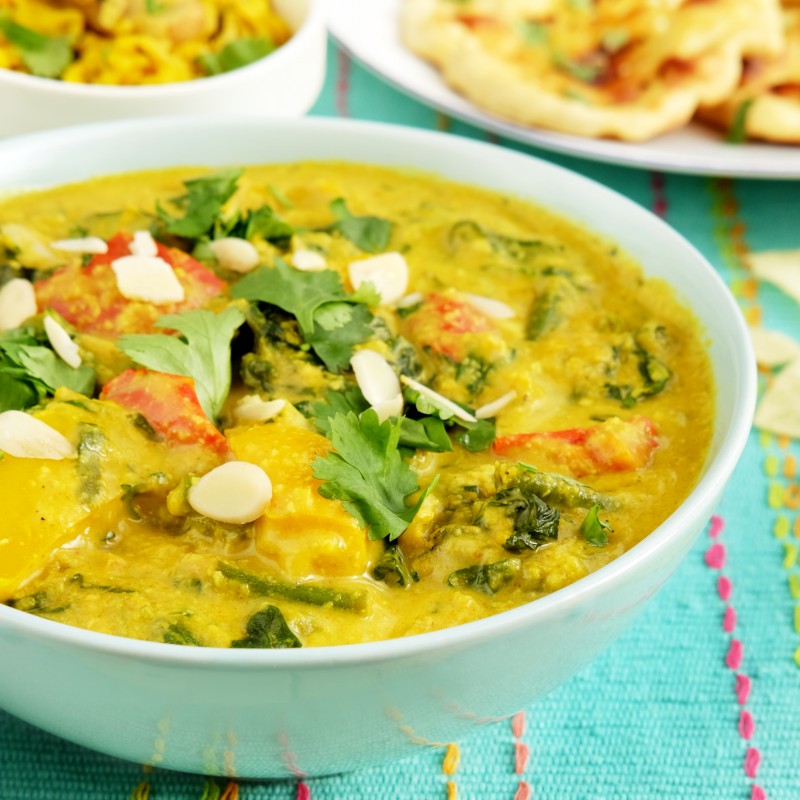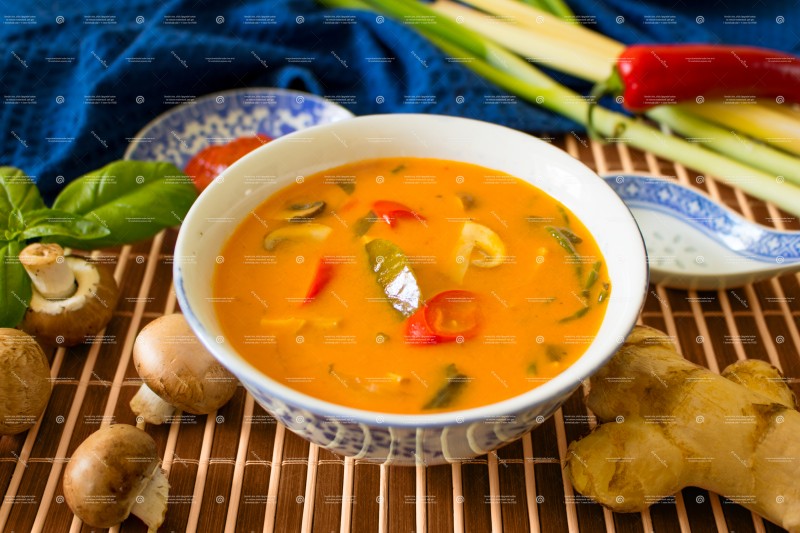Our fantastic new Cookery Masterclasses will soon be here! Taking place monthly from 21 October, these classes will cover topics such as vegan nut cheese and fermention, an airfryer masterclass and festive vegan cooking.
January's masterclass will focus on how to make a fantastic vegan curry. Here, Chef Claire tells us more about this traditionally complex dish which is made up of a mix of spices and is as tasty as it is versatile. Perhaps that's why it’s become such a classic?

When we think of the word ‘curry’, our mind may automatically skips towards thoughts of Indian recipes, but there are actually many other variants of this cuisine that all give amazing, diverse flavours.
Curries are also a huge hit with vegans and vegetarians because of their ability to accommodate almost any vegetable, not only as a substitute, but as the star of the dish.
Curry recipes are some of the most versatile dishes out there. They can be as easy or as complicated as you want them to be depending on how much time you have to spend on them. As huge lovers of curry here at Vegetarian for Life, we’ve put together a curry guide to share our tips and tricks to excite your taste buds for National Curry Week. Come with us while we take you on a trip through curries from around the world.
Indian Curries
Curry is a traditional dish in the Indian subcontinent and the selection of herbs and spices for each dish can vary largely depending on family preference and regional cultural tradition. The type of spices used in curries like these lend themselves well to vegetable and meat-substitute recipes because they soak up the flavour incredibly well. To celebrate National Curry Week, a survey was carried out to find out which curry was a favourite among vegans and vegetarians. Jalfrezi proved a firm favourite, closely followed by Rogan Josh. Why not try our Jalfrezi recipe that uses a delicious blend of garlic, cumin, chilli and coriander for a real taste of Bengal?
Chef's Tip: Take time to cook your onions well to add depth of flavour to your sauce.
Thai Curries
Thai food has had a huge surge in popularity in the last 10 years and we’ve seen loads of wonderful and authentic Thai restaurants pop up all over the country.
Generally, curries in Thailand are called ‘kaeng’ and are made from chilli paste, onions and/or shallots. In central and southern Thailand there is often a lot of coconut milk used to give the curry more of a soup-like texture. Depending on the region, dishes use local ingredients like kaffir lime leaves, galangal and lemongrass. If you’re looking to recreate the incredible tastes of Thailand at home, why not try our Thai soup as a starter?

If buying ready-made Thai curry paste or ordering a take away, make sure you check that it’s vegan because many contain shrimp paste or fish sauce.
Chef's Tip: Fry your Thai curry paste to release all the flavours.
Japanese Curries
Japanese curry usually consists of rice and vegetables served with a sauce that looks more like a thick stew, compared to something like a Thai curry. It’s often less spicy than traditional Indian curries and is a firm canteen favourite in Japanese culture. The most commonly known is perhaps the Katsu curry. It has a sweeter, fruitier flavour thanks to a base of caramelised onion, garlic and carrot. Then, it's spiced with mild curry powder and soy sauce, and sweetened with sugar. Tastes great served with slices of sweet potato.
Chef's Tip: Use Panko breadcrumbs to coat your sweet potato for extra crunch and texture.
Accompaniments
Curries can be served with accompaniments or 'Thali' style with a range of dips and breads.
Our Pilau rice is a simple variant on boiled rice and will add colour and flavour to your plate.
Rich saucy curries are perfect for dipping. Our simple flatbreads are made in minutes and go well with a variety of curries.
Cucumber Raita
The perfect accompaniment to any curry. Quick and easy to make; refreshing, cooling and delicious; this Indian cucumber yogurt sauce or dip recipe is vegan and perfect for balancing a spicy curry.
Ingredients
Method
1. Grate the cucumber using a box grater. Wrap the grated cucumber in several layers of paper towels or in a clean dish towel and squeeze thoroughly to press out as much water as you can.
2. Add the grated cucumber to a bowl with the yoghurt. Add the remaining ingredients and stir well to combine.
Spiced Onions
A great way to add a kick to milder curries, or simply serve with flatbreads or poppadoms. It's super simple to make with store cupboard ingredients.
Ingredients
Method
1. Chop onion and combine all the ingredients in a bowl.
2. Refrigerate for at least 1 hour before serving.
We hope that you feel inspired to celebrate National Curry Week. Whether you give the tried-and-tested classics a go, or take a bite into a new authentic spicy cuisine, we hope it’s fun and full of flavour! You can find more curry recipes to tantalise your taste buds on our website.
Categories:
Recipes